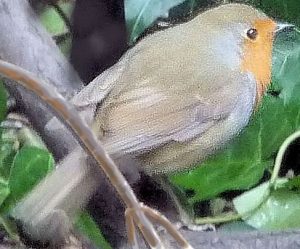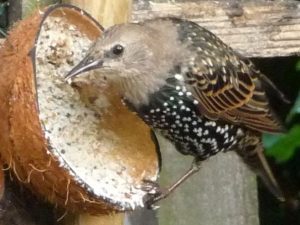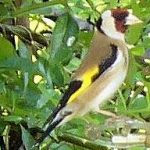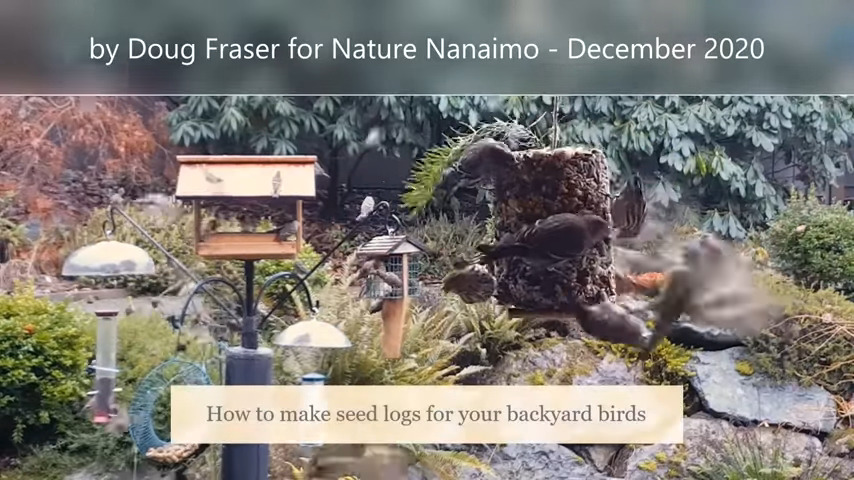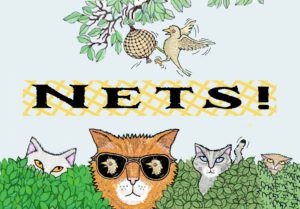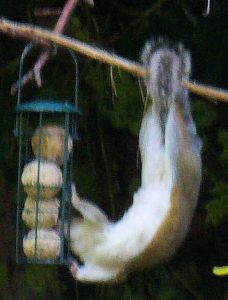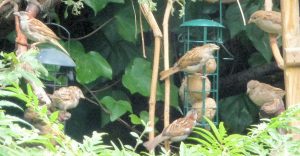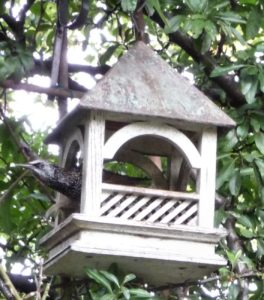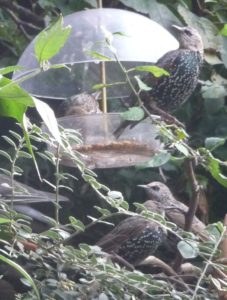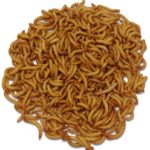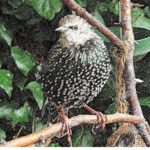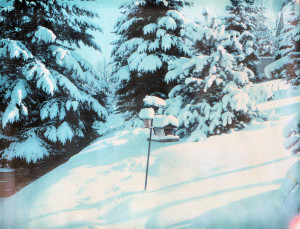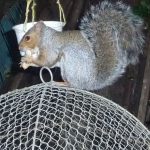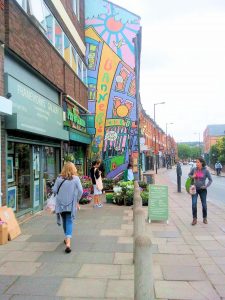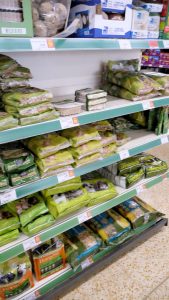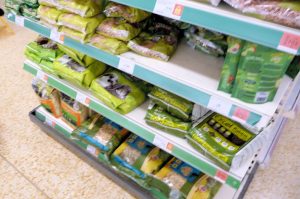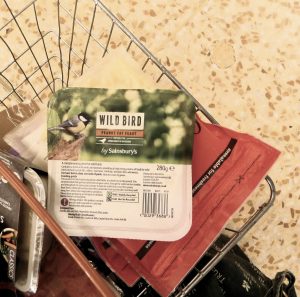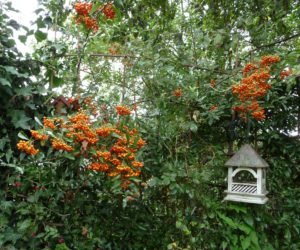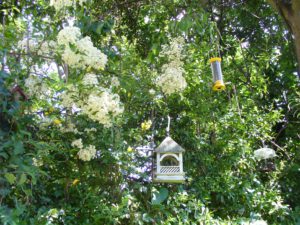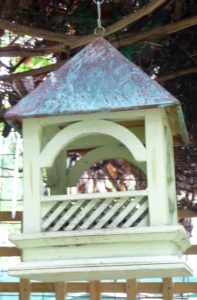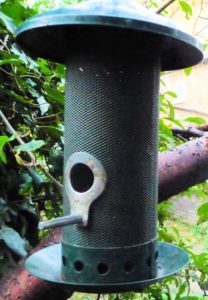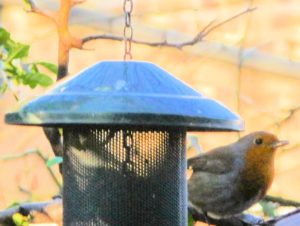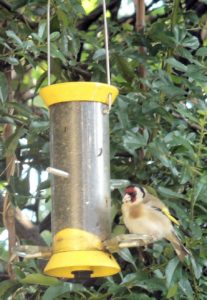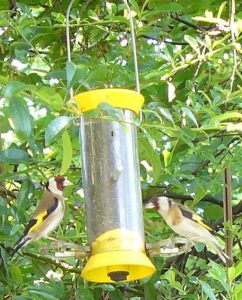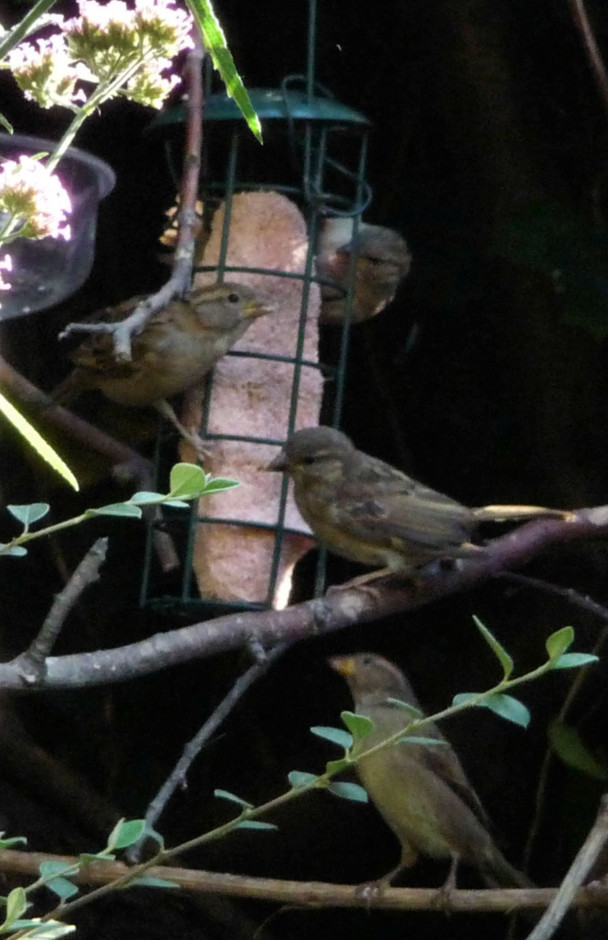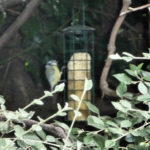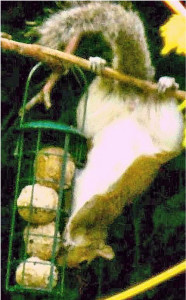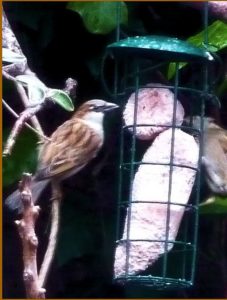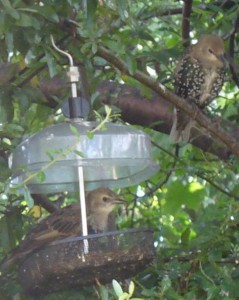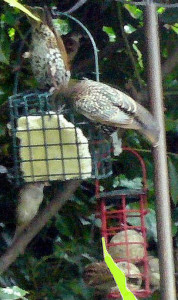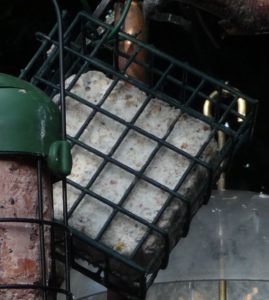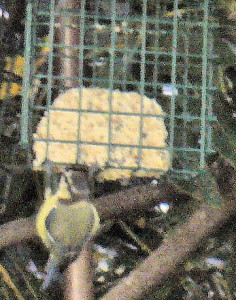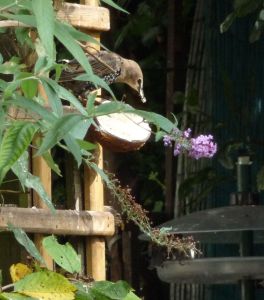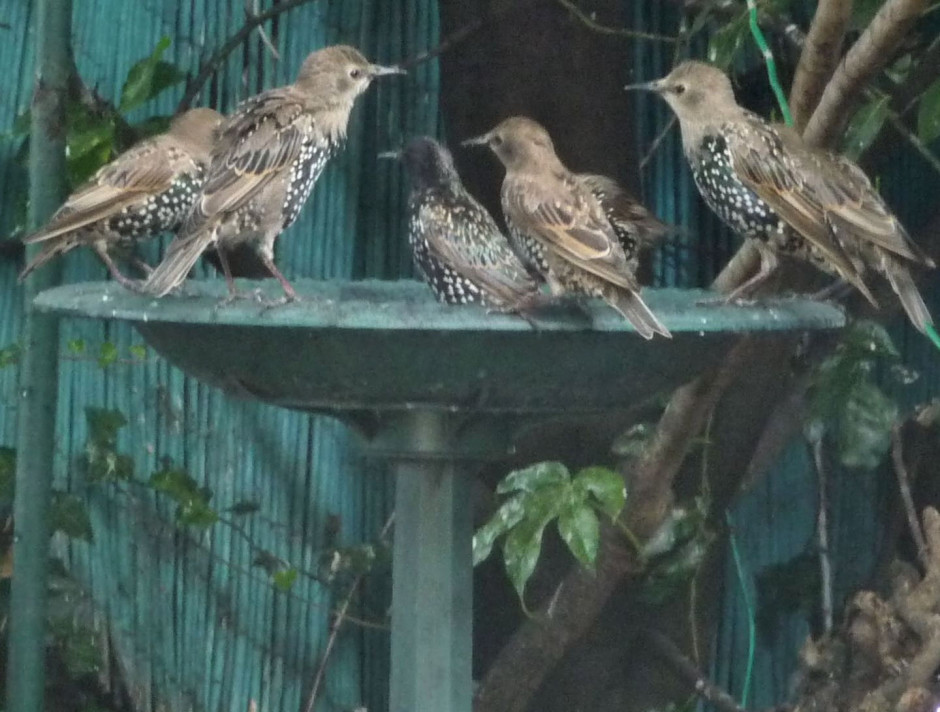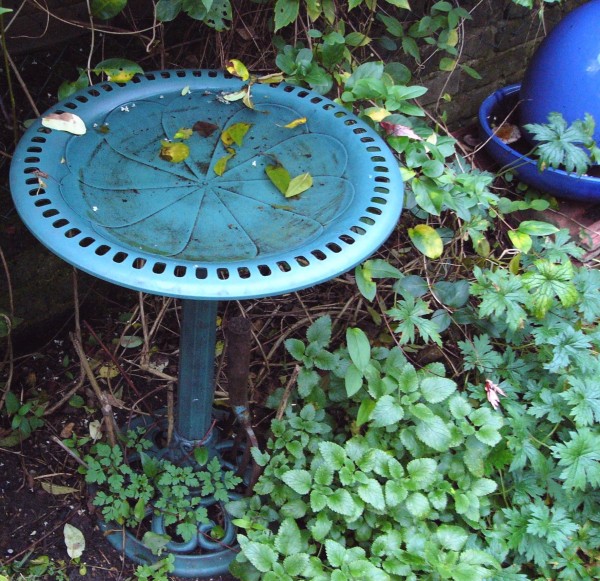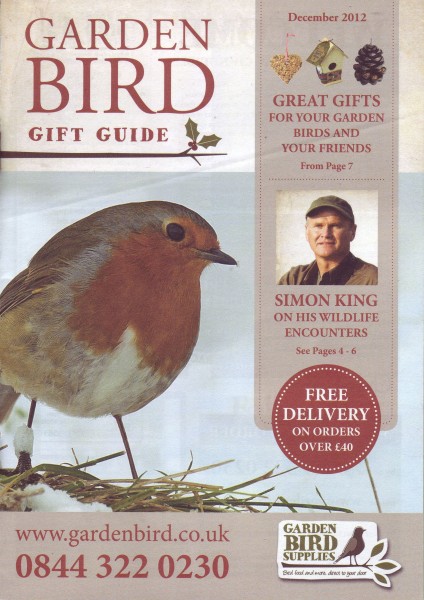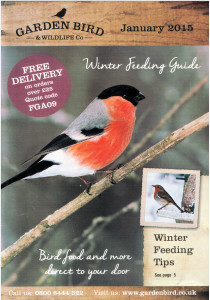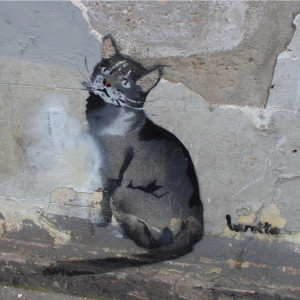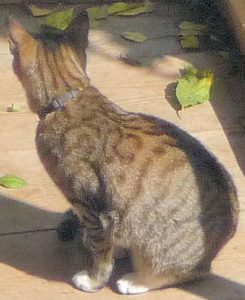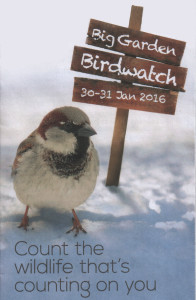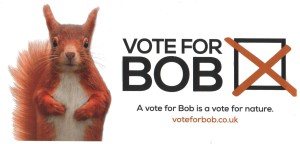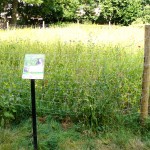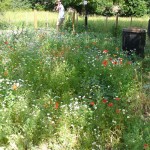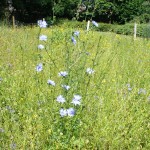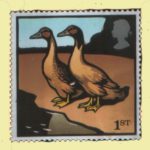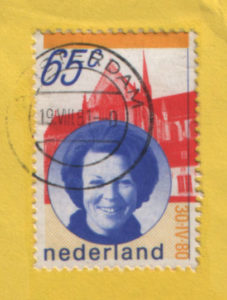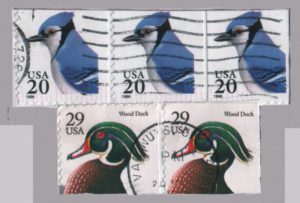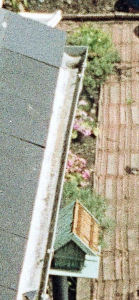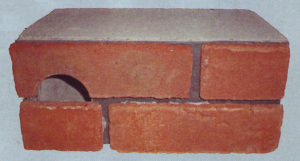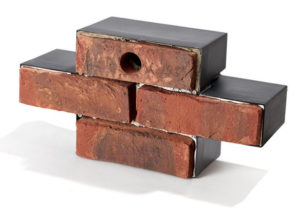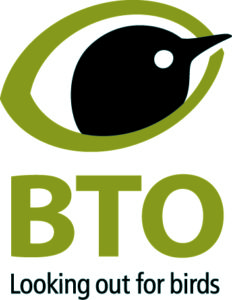One important thing you can do is to help the birds. Many species are in decline. By looking out for birds where you live, providing them with food or shelter, you can make a difference to their lives.
FEED THE BIRDS
If you want to help birds by offering them food, can you carry on doing so? Each day, at about the same time? Birds will come to depend on you as a provider. Your going away for a holiday will mean local birds who rely on your food station will waste energy flying in to find nothing to eat, unless you have someone else willing to feed them.
WHAT TO FEED THE BIRDS
SUNFLOWER SEEDS
Highbury’s seed-eating birds have shown their preference for these seeds. Squirrels also love them; one tubular feeder now has a metal ‘squirrel guardian’ round it, through which only the little birds can fit. Squirrels had previously been hanging upside down on this feeder, monopolizing it as they munched their way through the sunflower seeds.
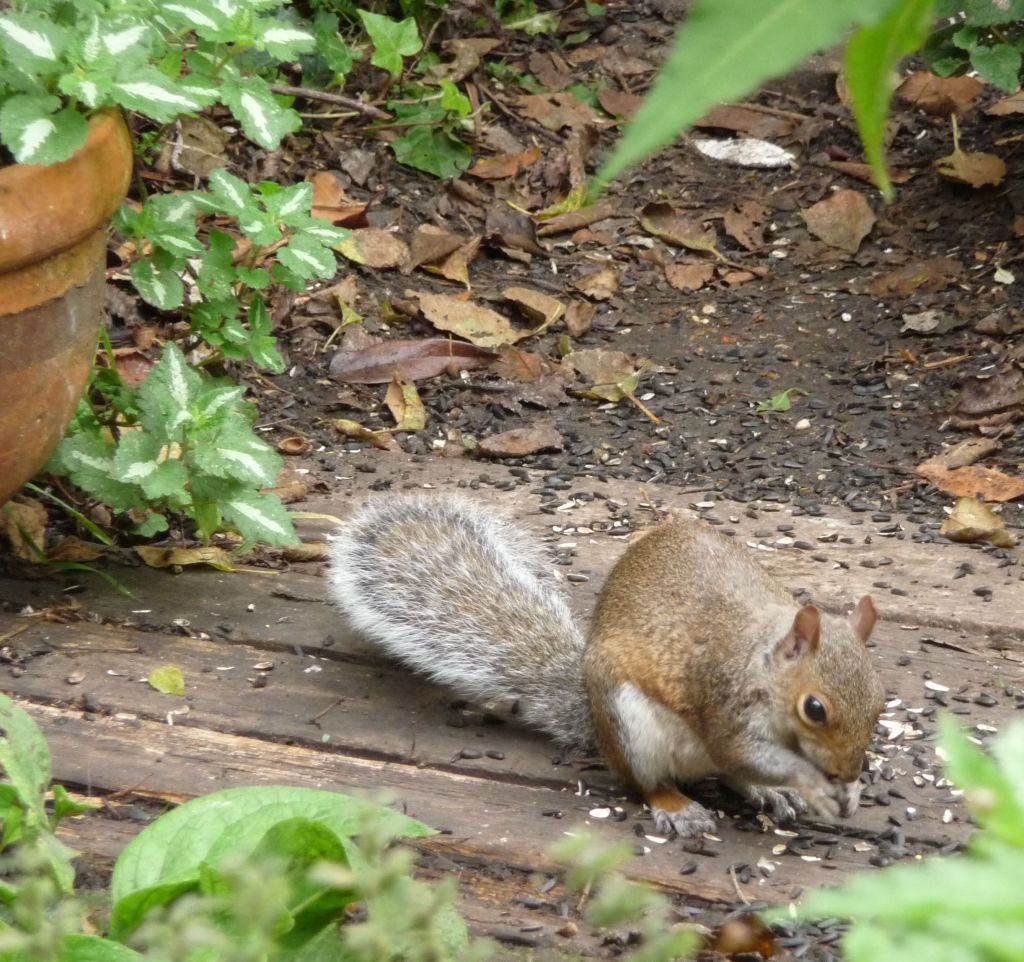
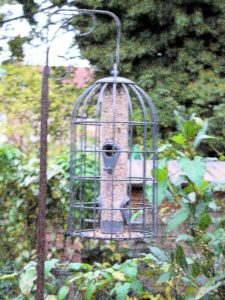
 One seed feeder, made of green metal mesh, caters for both birds and Squirrels.
One seed feeder, made of green metal mesh, caters for both birds and Squirrels.
A handful of black sunflower seeds on the ground will occupy a Squirrel for some time. Seeds are skillfully broken into and a carpet of shells left behind. If a Woodpigeon finds them first, the entire seed is swallowed whole.
Making Seed Logs for your Backyard Birds – youtube video
Doug Fraser shows how easily seed logs can be made as he stands in his garden surrounded by feeders and hanging seed logs and a multiplicity of birdies flitting to and fro… ‘my target audience’.
You can view a listing of related youtube vids in a new tab here
PEANUTS (MONKEY NUTS)
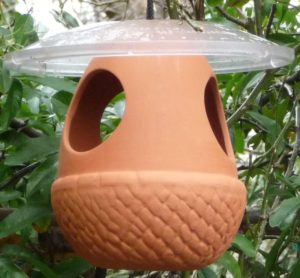
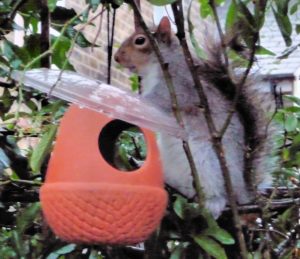 Monkey nuts are the first choice for squirrels. When they are available, squirrels create less havoc in the garden. When left on a tray in the corner of our garden, monkey nuts have also been taken by foxes, jays, & possibly magpies. So squirrels must now observe who is at the tray before they approach it.
Monkey nuts are the first choice for squirrels. When they are available, squirrels create less havoc in the garden. When left on a tray in the corner of our garden, monkey nuts have also been taken by foxes, jays, & possibly magpies. So squirrels must now observe who is at the tray before they approach it.
This terracotta feeder, filled with mixed seed, was ignored by small birds. But when filled with monkey nuts, it was emptied daily. until we found it lying on the ground. Someone had bitten through its garden twine. Squirrel damage? Mice? The twine was replaced with wire, but the feeder, now cracked, was again found on the ground. We got a replacement; still working on a revised plan of how to deploy this handsome acorn…
SUETBALLS : WITH OR WITHOUT NETS
For years suetballs have come packaged in nylon netting. Because they can be hung anywhere – on a nail in a wall, say – their supposed advantage is that one need not buy a feeder. But birds have been trapped by this netting – a look at the design of their feet & claws would make you wonder why nylon netting could have been thought suitable for birds.
In our garden, visited by cats & foxes, cover is important for the birds while they eat. But how good is the meal if you are caught up in the netting & cannot escape, becoming a meal yourself? Suetballs from The RSPB, Garden Bird & Wildlife Co, & our pet shop Hornsey Pet & Garden come without mesh nets, to avoid birds becoming trapped.
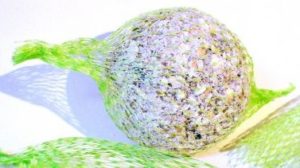 If you buy netted suetballs, you must cut them out of the net before placing them into a suetball feeder. You are left with a tangled mess of nylon – can you recycle it? Is it biodegradable? Will it go to landfill if you put it in your bin? Why should you have to deal with the problem at all? Haven’t you got enough packaging in your life already? Best to have no nets in the first place.
If you buy netted suetballs, you must cut them out of the net before placing them into a suetball feeder. You are left with a tangled mess of nylon – can you recycle it? Is it biodegradable? Will it go to landfill if you put it in your bin? Why should you have to deal with the problem at all? Haven’t you got enough packaging in your life already? Best to have no nets in the first place.
Look for companies offering their suetballs net-free.
DRIED MEALWORMS, BREAD & CHEESE
Each morning our garden birds get grated cheese & dampened, crumbled seedy bread. They wait in other gardens, on roofs, in trees or shrubbery, till food has been deployed, feeders topped up & the birdbath cleaned & filled with fresh water. The human provider then retires to a corner of the garden to watch as the customers fly in.
Dried mealworms are great favourites here with most birds, but our Starlings go bonkers for them. They make an enormous racket, breakfasting on mealworms & suet. When the meal is over, they visit the birdbath for a splash… then they fly up to sit in the trees, buzzing happily as their feathers dry.
TWO FEEDERS ARE BETTER THAN ONE
Having several feeders helps avoid the squabbles that were the norm at my parents’ birdfeeder, the only one in the neighbourhood. There were no places for birds to perch other than on the feeder or in the fir trees.
I now put out food for birds year-round in this built-up bit of London. And there are plenty of nearby perches for birds queueing up, waiting for access to the food. Some are branches on our trees, others are fallen branches that have been saved & attached where needed.
HOME-MADE FEEDERS
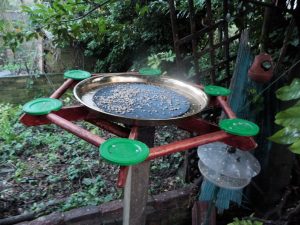
Pole mounted tea tray, good for feeding sunflower seeds. Nearby are plexiglas domed feeder (‘the UFO’) from Droll Yankees, & hanging terracotta acorn
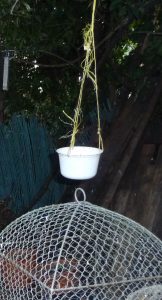
Squirrel feeder from plastic pot – squirrels climb down the twine, grab a monkey nut & climb back up to eat it on the branch.
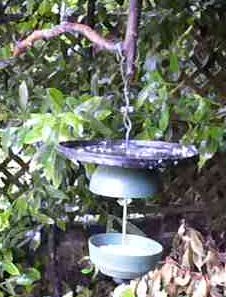
Cobbled together with bits of other small plastic feeders, with a plastic lid, the Swinging Feeder holds one small bird at a time. Good for grated cheese & mealworms.
Sourcing Food for your Wildlife
We were ordering birdfood online & having it delivered to our door. Then one winter our usually reliable deliveries were late – trucks coming south to London were caught in a deep freeze up north. We had to search for other sources of birdfood, as we did not want our birds going hungry in such weather. Local pet shops had closed over the years, & we looked further afield. Those still local to us catered well for pet dogs & cats, but had nothing for wild birds. We found pet shops in Crouch End & Muswell Hill, & are now regulars at Hornsey Pet & Garden with Flowers by Kristie, the nearer of the two.
The shop is family run, & you get a warm welcome from them all -advice on pets, flowers… a sleek black cat who lives nearby may be there on the counter, nibbling kibbles & helping to welcome customers.
Kristie Bishop-Downes was interviewed by Arthouse about this independent shop… “You can buy cut flowers, potted flowers, plants, seeds, pots, compost, garden tools & treatments… a big range of pet food, pet supplies, toys & accessories – all at great prices”… Open 7 days a week @ 19 Park Road, N8 8TE, North London. http://www.arthousecrouchend.co.uk/hornsey-pet-garden/
Nearby supermarkets Sainsbury’s & Tesco each have part of an aisle for pet food, including wild bird supplies. Poundland carries mealworms, half coconuts & other wild birdfood, with some stores carrying more than others.
And we order heavy bags of shelled sunflower seeds from Little Peckers, delivered to our door. Whatever your own situation, you should be able to rely on similar sources to help you feed your garden birds.
GARDEN BIRD & WILDLIFE CO
 Founded in 1994 in the small town of Wem, Shropshire, this specialist supplier of wild bird-related products delivers birdfood, birdhouses, feeders & other accessories to your door. These items are included in their free feeding guide, along with season-related articles on birds, competitions & more.
Founded in 1994 in the small town of Wem, Shropshire, this specialist supplier of wild bird-related products delivers birdfood, birdhouses, feeders & other accessories to your door. These items are included in their free feeding guide, along with season-related articles on birds, competitions & more.
Most of the birdfeeders & other items we have acquired over the years from Garden Bird & Wildlife Company can now be sourced from the internet as well.
FEEDERS
BEMPTON BIRDFEEDER
Birds visiting our garden have tested many feeders over the years. One of the newest is the Bempton Birdfeeder, with its copper roof that weathers into verdigris. Blackbirds & Starlings come to the Bempton for dried mealworms. Squirrels find it difficult to perch on the copper roof, & are uninterested in mealworms anyway.
METAL MESH FEEDER
This feeder dispenses shelled sunflower hearts & is a great favourite with Sparrows, Blue Tits & Great Tits. It hangs by a chain; the top lifts off for filling & cleaning. The green metal mesh allows air to reach any dampness in the birdfood, drying it out to prevent mildew.
Before we began feeding them monkey nuts, squirrels would cling to the mesh of this feeder, upside down, & eat seeds. When the roof has been pulled up, it is most likely by the claws of squirrels rather than the beaks of birds…
YELLOW GOLDFINCH FEEDER
The Goldfinch Flocker, a tube with small nicks taken out of it, is designed to cater for Goldfinch beaks. The finches sit sedately at this feeder, picking seeds from the nicks in the tube. Goldfinch are well camouflaged; we had no idea there were any in the neighbourhood until we installed this feeder and found them perching on it.
SUETBALL FEEDER
These feeders are designed for clingers and hangers-on; in our garden that includes Sparrows, Starlings, Blue Tits and Squirrels, who like to hang upside down to feed. Squirrels tend to demolish an entire suetball for a few large seeds or nuts worth burying. This leaves the feeders empty for everyone else.
The Hornsey Pet and Garden Shop in Crouch End has a solution: suet rolls. They may be available elsewhere as well.
MEALWORM FEEDER
This, the newest feeder, was immediately found acceptable by the Starlings. As many as four of them at a time can be pecking up Mealworms from this feeder as it bounces about.
If one Starling is feeling dominant, it will behave like a football keeper in goal – making itself big – opening its wings and pecking all others away.
The PROBLEM with this feeder was not its popularity but finding a bird hanging from the wire mesh base by a trapped claw… As I approached to free it, with a struggle it freed itself & flew off. Since then the feeder has been removed. With a plastic base this feeder design would be safer for birds.
TREAT BLOCK FEEDER
Treat block feeders are favourites with Sparrows & other small birds. Starlings will hang from them to feed as well.
The small square shape is more of a problem for the Squirrels, who prefer feeding while hanging upside down on the long tubular feeders.
HALF COCONUT
When half coconuts are propped at an angle, many birds can reach the suet filling – not only the perching birds. We get these from Hornsey Pet & Garden or Sainsburys at the Angel, where RSPB‘s half coconuts are favourite.
A half coconut, hung out one morning, was an empty shell the next day, with no peck marks visible. We thought a squirrel might have got to grips with the new item in the garden, but it was more likely a fox’s paw that prised the filling out of the coconut.
BIRDBATH
This is the much-visited Birdbath. Wildlife – Moths & Bumblebees, Birds & Squirrels, drink from it. Providing fresh water daily can be vital to these creatures.
The birdbath’s weatherproof verdigris finish is washable, & scrubbed each day when its water is changed.
This is the much-visited Birdbath. Wildlife – Moths & Bumblebees, Birds & Squirrels, drink from it. Providing fresh water daily can be vital to these creatures.
The birdbath’s weatherproof verdigris finish is washable, & scrubbed each day when its water is changed. This is a favourite gathering place for Starlings, who like to splash about in it. One day Scurvy, living in the garden flat with the best view of the garden’s entertainment, said that he counted ‘nine Starlings round the edge, and one break-dancing in the middle!‘
February 2021
Birdbath Care During the Winter . April Dowling for Dave’s Garden
An excellent article with many tips and hints, from an American site.
https://davesgarden.com/guides/articles/view/5350
The ‘No Signature Required’ contract with the couriers means you don’t need to be in when your order arrives. You can also ask for your order to be delivered to another UK address (such as your workplace).
Orders can be placed online from The Garden Bird website :
www.gardenbird.co.uk
Garden Bird & Wildlife Co, Unit 9 Enterprise Court, Lancashire Enterprise Business Park, Leyland, PR26 6TZ
CHANGES AFFECTING THE BIRDS
CHANGES TO THE HUMAN PROVIDING FOOD FOR THE BIRDS
Birds come to rely on a feeding station, once it has been set up. A Designated Birdfeeder Replenisher is important, in case the person feeding the birds
* Becomes ill, is hospitalised
* Goes on holiday
* Moves house
* Passes away
* After my mother died, my dad moved in with my brother & his family. He drove back to his own house every few days to make sure the bird’s feeder was topped up. No-one else we knew locally fed the birds – there were always dozens at the feeder.
It was a cold, snowy November when my father died. Many of those birds would also have died, because of the time of year, the conditions & no-one refilling the only birdfeeder they had come to rely on.
CHANGES TO THE HOUSE OR GARDEN
* House makeover
Hoping to improve the house to attract buyers, the owner is advised to finish all those DIY jobs that need doing. The front of the house must be given ‘kerb appeal’, so those nesting places for sparrows, such as leaky guttering and dodgy brickwork, are put right.
* Garden makeover
Has the homeowner any idea of wildlife nesting in that mature tree, that unfashionable evergreen? Do they care? Garden makeover programmes encouraged us to stamp our own personalities on the garden. This may involve ripping out all vegetation ‘to let the light flood in’. Concrete, decking, glass blocks and lighting could be part of the new look. ‘Our personalities’ may mean doing away with places where an ecosystem had developed, with life forms so small we would not have noticed.
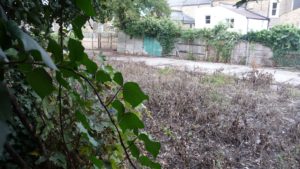
Wasteland after Sanei Hopkins architects sprayed what had been green, a former small woodland, with toxic chemicals
* Property Developers Looking for a ‘Change of Use’ for Land
* Even an empty plot overgrown with scrub and self-seeded trees – looking unkempt and unacceptable to us – can be being used by wildlife. Insects can be living there.
Insects, their eggs & grubs – are food for birds. When the property developer flattens the area, a vast food harvest is taken away – like demolishing a high street, a supermarket for birds & wildlife.
CHANGES TO THE LOCAL PREDATORS
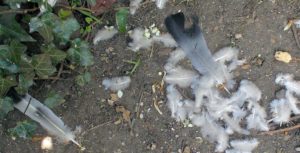 * The new cat on the patch – young, quick, good at sudden moves, at chasing, climbing & catching birds… One single cat, skilled at what it does, can make a difference to the numbers of birds who live or die in an area, who can set up a family.
* The new cat on the patch – young, quick, good at sudden moves, at chasing, climbing & catching birds… One single cat, skilled at what it does, can make a difference to the numbers of birds who live or die in an area, who can set up a family.
CHANGES TO BUILDINGS – HOUSES, COUNCIL ESTATES
* Scaffolding and netting are put up for a repairs regime – sparrows cannot get to nesting vents.
* Mature trees & shrubbery are cut down or, in a front or back garden, covered with builders’ materials. If birds had relied on those trees & shrubbery at nesting time, there will be no place for them on their familiar patch. Whether the neighbourhood has a place that would be a good substitute – out of reach of cats, within reach of food (seeds, insects) may determine whether or not those birds can raise a family.
IF SEVERAL OF THESE CHANGES HAPPEN AT THE SAME TIME, IN A NEIGHBOURHOOD THAT ONCE HAD NESTING BIRDS IN IT, IS IT ANY WONDER THAT NUMBERS HAVE FALLEN?
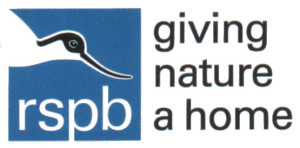
This major UK charity aims to make a difference to the welfare of birds, here & abroad. These days it also works to Give Nature a Home, supporting many other creatures who have a place in our shared environment.
Visitors to the Highbury Wildlife Garden are Blue Tits, Great Tits, Robins, Wrens, Starlings & Sparrows – garden birds. We have Crows, Wood Pigeons & Magpies in the neighbourhood, & are overflown by Swifts, Gulls, Ducks & other birds higher up. We do what we can for birds who visit us, & we support the RSPB.
Some familiar British birds are migrants who spend part of each year in other countries. Hunting & changes to the climate & their living places abroad have left many birds facing danger & death once they leave the UK. The RSPB campaigns abroad with partner organisations to improve the welfare of migratory birds.
There are RSPB shops around the country; none are in London, but some of their birdfood can be found in the pet aisle of the larger supermarkets.
The Big Garden Birdwatch, an important nationwide survey of UK birds, has been ongoing for over 35 years. Millions of people have counted the birds in their park or garden for one hour on a single day in winter, made notes of what they saw, and sent their results, online or by post, to The RSPB. Information gathered has shown how well, or how badly, our birds are faring. These details are then used in many RSPB campaigns and projects.
RSPB VOTE FOR BOB
The RSPB works with others to solve environmental problems. Joining with The Wildlife Trusts in the VOTE FOR BOB Campaign in 2014/2015, it aimed to push NATURE higher up the political agenda in May’s General Election. Bob, its charismatic candidate, urged politicians to commit to a NATURE AND WELLBEING BILL to stop the losses to nature & work towards a recovery for birds & other wildlife.
‘I may be a small red squirrel, but I have big ambitions. Once you get past my bushy tail, stylish ear tufts and well-groomed whiskers, there’s not much difference between you and me. I’ve decided I can no longer sit here in my tree gnawing on nuts while the woodlands, meadows and wildlife around me are disappearing. I want my young – and yours – to inherit a world where they can thrive…’
Bob had his own internet pages & was on Facebook & Twitter. His campaign for a vote for nature received 120,819 votes, with backing from 1,098 Prospective Parliamentary Candidates.
HOPE FARM
Numbers of Skylark, Corncrake, Lapwing & other UK farmland birds have plummeted over the years. No-one could have foreseen, during the war’s Dig for Victory Campaign, what the unintended consequences of change to farming practice – the grubbing up of hedgerows & use of pesticides – would be, decades later.
The Hope Farm project is the RSPB’s attempt to reverse wildlife losses with a return to more traditional farming methods. In April 2000 the charity bought a farm in Cambridge. Cereals had been grown on its 181 hectares (450 acres) using heavy machinery, pesticides and fertilizer. Changing those farming techniques has helped wildlife, while producing food cost-effectively. New habitats such as wildflower field margins, unharvested crops for wild birds & skylark plots have helped birds, bees, butterflies & other wildlife to flourish on Hope Farm.
Breeding populations of 17 intensively monitored bird species were found to have increased by 190% as of December 2014. Insect visitors to the farm are counted – Bumblebee numbers go to Bumblebee Conservation Trust; Butterfly numbers logged on three butterfly transects go to Butterfly Conservation Trust.
http://www.rspb.org.uk/forprofessionals/farming/hopefarm/the_farm.aspx
SAVING THE HOUSE SPARROW
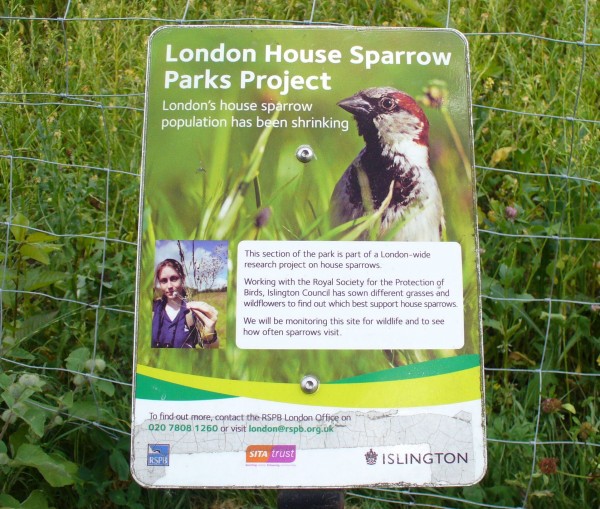 House Sparrow numbers have plunged over the years, down by 68% between 1994 and 2009. At an Islington Ecology Centre talk in 2005, a speaker from The RSPB said he would never have believed that this once ubiquitous bird could have suffered such losses. Research has since found that, especially in urban areas, a lack of insects & invertebrates in the first days of life led to poor development & starvation for many baby Sparrows.
House Sparrow numbers have plunged over the years, down by 68% between 1994 and 2009. At an Islington Ecology Centre talk in 2005, a speaker from The RSPB said he would never have believed that this once ubiquitous bird could have suffered such losses. Research has since found that, especially in urban areas, a lack of insects & invertebrates in the first days of life led to poor development & starvation for many baby Sparrows.
The London Borough of Islington & other Boroughs joined with The RSPB for the London House Sparrow Parks Project. In this three-year search for the best wildflowers to increase insect numbers, seed mixes were planted on 25 sites in 19 London parks. The merits of long grass, wildflower seed areas & wildflower meadows for House Sparrows and other birds were compared.
Photos from test area on Laycock Street Open Space, off Upper Street, Islington.
For a good write-up of the scheme & its results go to:
http://www.friendsoftootingcommon.org.uk/LondonHouseSparrowParksProject.pdf
LIMESTONE PAVEMENTS IN CUMBRIA
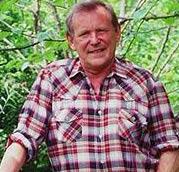 The RSPB‘s campaign to conserve limestone pavements in Cumbria was supported by the late BBC Gardener’s World presenter, Geoff Hamilton.
The RSPB‘s campaign to conserve limestone pavements in Cumbria was supported by the late BBC Gardener’s World presenter, Geoff Hamilton.
He showed us how to make imitation York stone, a good match for the real thing that avoids destroying a precious UK habitat in the name of gardening.
RSPB STAMP SCHEME TO SAVE ENDANGERED ALBATROSSES
 In this campaign the RSPB works to help wildlife at risk elsewhere on the planet.
In this campaign the RSPB works to help wildlife at risk elsewhere on the planet.
15 of 22 Albatross species are now facing extinction. Thousands of these seabirds follow fishing trawlers each year. Mistaking bait for food, they are caught on hooks meant for fish & dragged underwater. Working with local fishermen, The Albatross Task Force buys & distributes bird scaring devices & weights to sink the bait quickly. Albatross deaths in one area alone, South Africa, are down by 99%.
The Albatross project is funded by the collection of used postage stamps. They are valuable in large quantities when converted to cash. £50 worth of stamp sales will buy a tori-line (bird scaring device) for a longline fishing vessel. In 2012/13 used stamp donations helped the RSPB raise £17,000 for this scheme.
Stamp albums, first day covers and rare stamps (pre 1970): Send these to the Community Fundraising Department at the Lodge. The RSPB will send them to a specialist auction house to achieve the best price. If you wish, send them your details & they can let you know how much your stamps have raised.
JOIN THE RSPB
You may wish to support only your garden birds, not Albatrosses in the South Atlantic, birds of prey, or habitat in another country. But it is all connected. Habitat for birds, here & worldwide, is crucial. By becoming a member of the RSPB you can support its many strategies & campaigns to help birds everywhere & give nature a home.
http://www.rspb.org.uk/
RSPB UK Headquarters, The Lodge, Potton Road, Sandy, Bedfordshire SG19 2DL.
Offering shelter to birds can determine whether they can successfully raise a family or not. A situation such as ours in Highbury – terraced housing in a built-up area – can provide particular problems. If you know some of your neighbours, or have a community group to turn to, you could manage to solve some of the problems we have encountered.
Kingston University graduate Aaron Dunkerton designed The Swift Brick, a unit of 5 clamp-fired bricks that could be placed under the eaves of a house being renovated to provide a nesting place for swifts. Along with The Sparrow Brick, meant to give shelter to our fast-disappearing House Sparrows, Aaron‘s design was shortlisted for the Design Council Future Pioneer Award 2013. The bricks were cast with the help of MBH, Freshfield Lane, W. Sussex.
On Aaron’s webpage are his Bird Brick designs, contact details, & his reasons for wanting to save the House Sparrow.
http://www.aarondunkerton.com/bird-nesting-brick/
Bird Brick Houses Ltd. make these hollow brick designs that can be used as houses for birds. With habitat loss being a major cause of the drop in bird numbers, this is one innovative way to provide housing for more birds.
Bird Brick Houses cater for a range of small to medium-sized UK birds, from Blue Tits to Starlings to Swallows, with a table of entrance sizes for each species. The company’s core market is bulk manufacturing for new housing estates & industrial units, but they will supply Bird Brick Houses for retro-fitting into an existing structure, individually if required.
‘ Our brick matching service includes the collection of bricks from the site, bricks which are then used to construct the Bird Brick Houses specified. The finished boxes are returned ready to fit. We also hold a supply of some commonly used bricks.’ Contact them for details.
Bird Brick Houses Ltd., The Old Parlour, Wilbees Farm, Arlington Nr Polegate, East Sussex BN26 6RU
The BTO is an independent charity that does important research into biodiversity, especially as it concerns birds. Its scientists rely on the help of members and volunteers.
The BTO has a free information pack with advice on making or buying a nest box, choosing the best site for it, reducing the risk from predators, and cleaning and maintenance. The pack is from National Nest Box Week: last year the public was asked to put up a nest box from 14-21 February and monitor the results, but nest boxes can be put up any time of year.
See their website for details:
